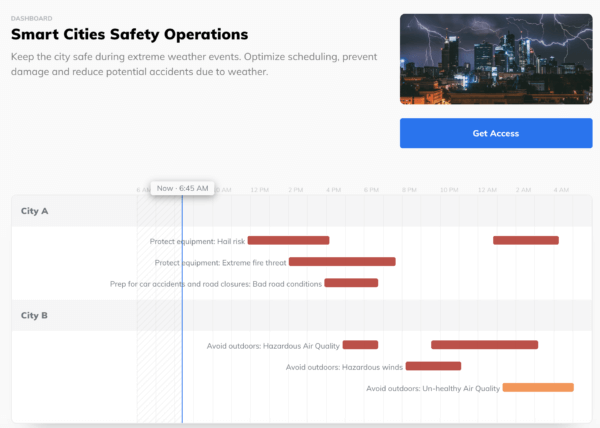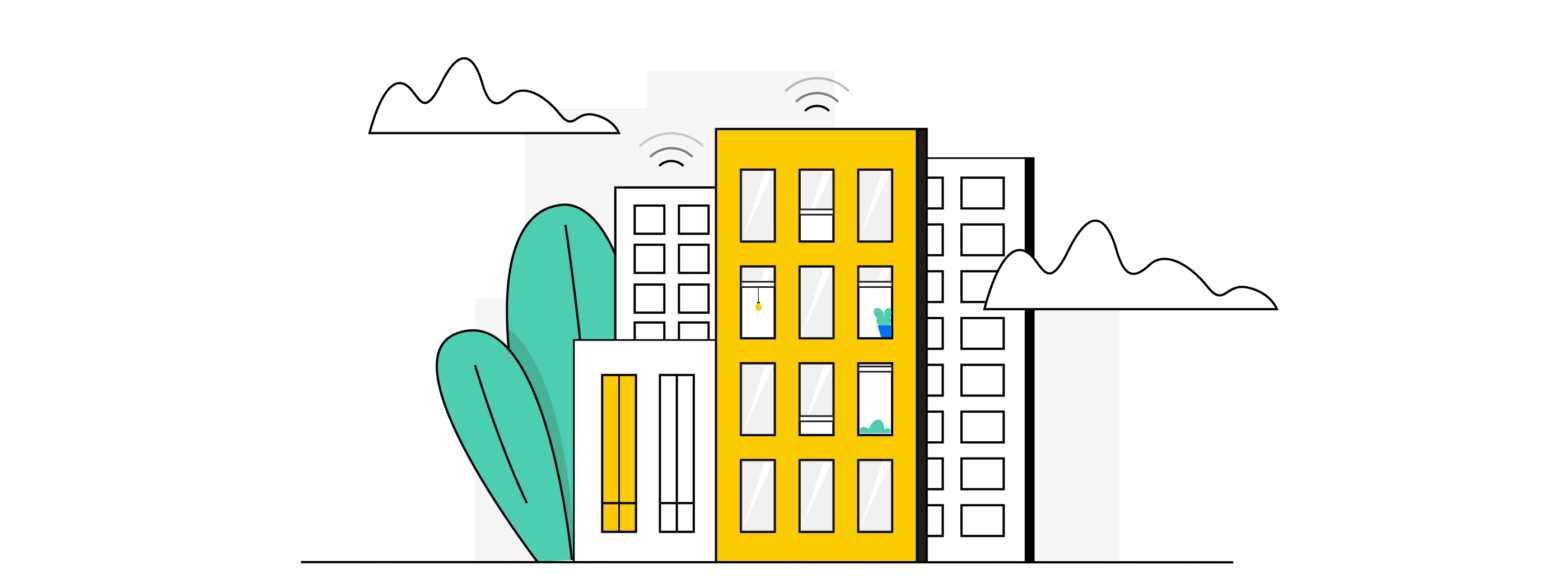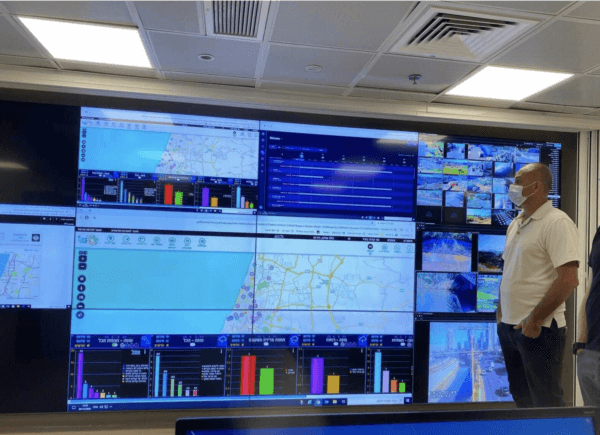For any government, the weather is always a constant concern.
Local and national government agencies around the world have to quickly respond to any weather event that impacts citizens and damages vital infrastructure.
Depending on where you are in the world, that could be anything from hurricanes to blizzards to floods to wildfires.
And while most governments have set protocols and standard procedures in place to act quickly and respond to natural disasters, the response is only as good as the forecast.
Too often, government agencies rely on inaccurate forecasts and old methods of communication to coordinate responses to the weather. That’s why weather intelligence has become the new gold standard for governmental disaster response.
With detailed, hyperlocal forecasts and automated triggers whenever the weather exceeds safety parameters, governments and municipalities can better prepare for any weather. Here’s why every government needs weather intelligence for smarter operations.
The Impact of Weather on Government
Anyone who has lived through a natural disaster knows how devastating it can be on the lives of residents. Whether your area has been flooded, damaged by wind, or hit by an ice storm, the damage can be serious. And it can impact not only private property, but also vital public utilities like electric grids and roads.
Governments have a responsibility to their citizens to get utilities like electricity and water up and running as quickly as possible after a disaster. But that is always easier said than done. It’s incredibly difficult to manage a cross-team response in a disaster relief situation. You need to make sure that fire, police, utilities, and more can all be dispatched quickly, and to the specific areas most in need of help.
And the governmental costs for that quick disaster response are staggering. For example, the state of California spends about $2.5 billion on CAL FIRE firefighting each year. And that’s just one of the many costs associated with battling the intense wildfires the state faces every season.
Optimize Your Natural Disaster Response
Disaster response is always a massive operational challenge, and without the right technology in place, it can be a difficult process to manage. There are so many people involved across multiple agencies, communication alone can be difficult. This is exactly why so many government agencies are turning toward new technology like weather intelligence for a better solution to disaster response.
By taking your government’s emergency response weather parameters – wind speeds above X mph, flood risk high, icy road conditions, and more – you can create a dashboard that instantly shows you when the weather forecast is a risk and gives you plenty of time to prepare and adapt the incoming dangerous weather.

Above, you can see an example of a weather insight dashboard that shows the risk of fire, hazardous air quality, high winds, and more. The red is high risk, the orange lower risk. With this dashboard, you can quickly see when the forecast puts your city or municipality at risk.
Even better, you can set up alerts to go out through email, text message, and more, to streamline communication across multiple teams and locations. This enables you to not only respond quickly in the case of a natural disaster but even adapt to smaller weather events like high winds efficiently and quickly. You’re able to plan your response further in advance, ensuring an orderly and optimized response that is sure to save time and money.
How Tel Aviv Uses a Weather Intelligence Dashboard
Municipalities around the world have already started using weather intelligence on the ground. Specifically, the Tel Aviv Yafo Municipality today uses the Tomorrow.io dashboard at their command center to understand specifically how weather impacts city operations every day.
The city uses the insights dashboard to understand the risk of urban inundations and river flooding, getting early alerts to reduce risk.
The Israel Fire and Rescue Authority, IFRA, also relies on the Insights Dashboard for operations, helping the organization understand risky weather conditions like lightning and dry heat that can increase the risk of fires.
These two applications of the technology are only the starting point for Tel Aviv, and there are myriad other ways for the local city government to use Tomorrow.io to improve operations and respond faster to emergencies at a hyperlocal level.
Want to learn how weather intelligence can help your government or municipality?
















